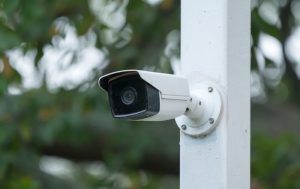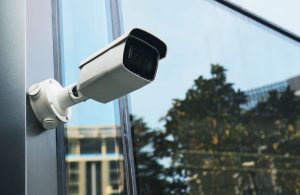Security cameras are a cornerstone of modern surveillance systems, and among the many available options, PoE cameras have become particularly popular. But what exactly is a PoE camera, how does it work, and why should you consider one for your home or business? In this article, we’ll explore everything you need to know about Power over Ethernet (PoE) cameras in a detailed and easy-to-understand format.
What Is a PoE Camera?
A PoE camera is a type of network camera that receives both power and data through a single Ethernet cable. This eliminates the need for separate power supplies or outlets near the camera location, making installation simpler, more flexible, and more reliable.
PoE technology is based on the IEEE 802.3af/at/bt standards and allows Ethernet cables (Cat5e, Cat6, or better) to deliver up to 90 watts of power along with data.
How PoE Cameras Work
Traditional security cameras require two connections:
- A power cable (usually to a wall socket or power adapter)
- A data cable (usually Ethernet or coaxial, depending on the camera type)
In contrast, a PoE camera uses just one Ethernet cable that connects to a PoE switch, PoE injector, or PoE-enabled Network Video Recorder (NVR). This cable simultaneously powers the device and transmits video footage to a recording or monitoring system.
This dual-function cable drastically simplifies the installation process and reduces the clutter and cost of wiring, especially for systems with multiple cameras.
Types of PoE Cameras
There are several types of cameras tailored for different use cases:
1. Bullet PoE Cameras
Bullet cameras have a long, cylindrical shape and are typically used outdoors. They are often weatherproof and can cover long distances, making them ideal for driveways, parking lots, or building exteriors.
2. Dome PoE Cameras
Dome cameras have a compact, dome-shaped design and are typically mounted on ceilings. These are popular for indoor installations due to their discreet appearance and 360-degree coverage.
3. Turret PoE Cameras
A turret camera combines features from both dome and bullet cameras. It has a ball-and-socket design that allows flexible angle adjustment, and it’s easy to install and maintain.
4. PTZ PoE Cameras (Pan-Tilt-Zoom)
These cameras can rotate (pan), move vertically (tilt), and zoom in on objects. PTZ PoE cameras are ideal for covering large areas such as warehouses, parking garages, or commercial properties.
5. 4K and AI-Powered PoE Cameras
Higher-end cameras now support 4K resolution and come with AI-based features like human/vehicle detection, facial recognition, and motion tracking.
Advantages of PoE Cameras
PoE cameras come with several significant advantages over traditional and wireless systems:
Simplified Installation
One cable does the job of two—this greatly reduces the time, effort, and cost involved in setting up the surveillance system.
Reliable Power Supply
PoE technology ensures a stable and continuous power source. Unlike wireless cameras that depend on battery or unstable Wi-Fi, PoE cameras are less prone to interruptions.
Centralized Power Management
With PoE, power can be centrally managed via a PoE switch or NVR, which often includes failover protection and easy reboot capabilities.
Scalability
Adding additional cameras is straightforward. Simply connect them to a PoE switch or NVR without needing to install new power outlets.
High Video Quality
Because PoE cameras use a wired Ethernet connection, they can stream high-resolution video without compression or lag, unlike some Wi-Fi cameras.
Longer Cable Runs
PoE can transmit power and data up to 100 meters (328 feet) using standard Ethernet cables. With extenders, this distance can be increased significantly.
Enhanced Security
Wired connections are inherently more secure than wireless ones. cameras are less vulnerable to signal jamming or hacking.

PoE vs. Other Camera Types
| Feature | PoE Cameras | Wireless Cameras | Analog Cameras |
| Power Source | Ethernet cable | Battery or AC | Separate power |
| Data Transmission | Ethernet cable | Wi-Fi | Coaxial cable |
| Installation | Moderate | Easiest | Complicated |
| Video Quality | High | Variable | Low to medium |
| Security | High | Lower | Low |
| Cost (Initial) | Moderate | Low | Low |
| Cost (Long-term) | Low | High (battery) | High |
PoE Camera Setup: What You Need
To set up a PoE camera system, you’ll typically need the following components:
1. PoE Camera(s)
Choose the right camera type (dome, bullet, PTZ) based on your security needs.
2. PoE Switch or Injector
- A PoE switch can power multiple cameras and manage data transfer.
- A PoE injector is suitable for powering a single camera when you don’t have a PoE switch.
3. NVR (Network Video Recorder)
A PoE NVR simplifies the setup by combining recording and power distribution into one device. Modern NVRs also support remote viewing via apps.
4. Ethernet Cables (Cat5e or Cat6)
These cables connect your cameras to the PoE switch or NVR. Use weatherproof cables for outdoor installations.
5. Router and Internet Connection (Optional)
For remote access and cloud storage, you’ll need internet connectivity.
Installation Tips
- Plan Camera Locations: Identify key areas that need coverage. Consider entrances, driveways, and blind spots.
- Test Equipment Before Mounting: Ensure all components work properly before final installation.
- Use Surge Protectors: Especially for outdoor setups to prevent damage from lightning or power spikes.
- Label Cables: For easier troubleshooting and maintenance.
- Enable Encryption and Change Default Passwords: Secure your network against unauthorized access.
Common Use Cases
- Home Security: Front doors, backyards, and garages.
- Business Surveillance: Offices, warehouses, storefronts.
- Public Places: Schools, parks, and government buildings.
- Construction Sites: Temporary installations with long cable runs.
Are There Any Drawbacks?
While cameras offer many advantages, a few limitations exist:
- Requires Ethernet Infrastructure: You need to run Ethernet cables, which may be difficult in some environments.
- Upfront Cost: PoE cameras and switches may be pricier initially compared to wireless alternatives.
- Not Plug-and-Play: Some technical knowledge may be needed for setup and configuration.
Final Thoughts
PoE cameras represent a powerful, efficient, and scalable solution for modern surveillance needs. By simplifying installation and enhancing performance through a single cable for both power and data, camera offer a reliable alternative to traditional and wireless systems. Whether you’re securing a small home or managing a complex commercial property, investing in a well-designed PoE camera system is a smart long-term decision.


One thought on “What Is a PoE Camera? A Complete Guide”